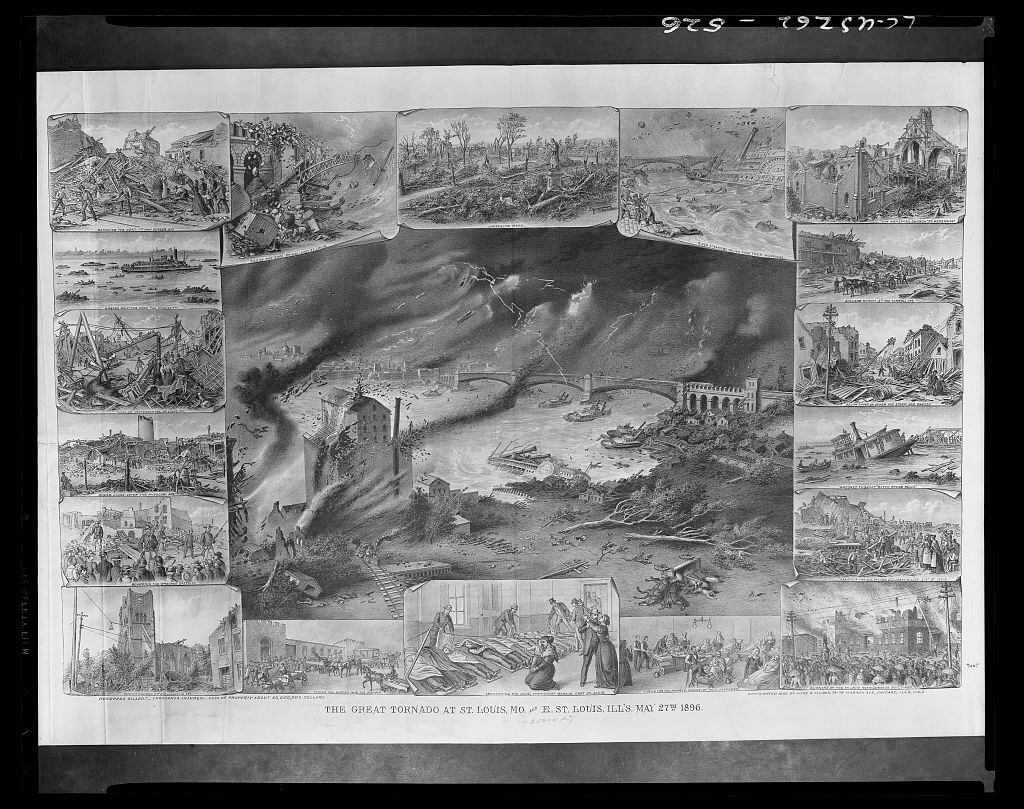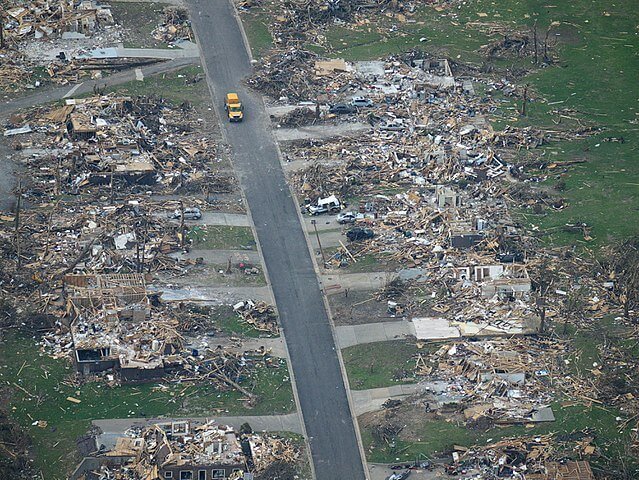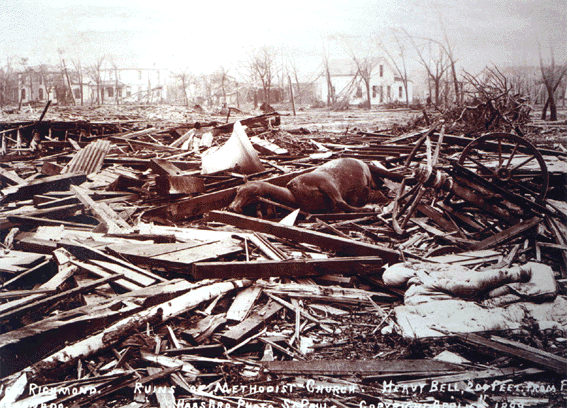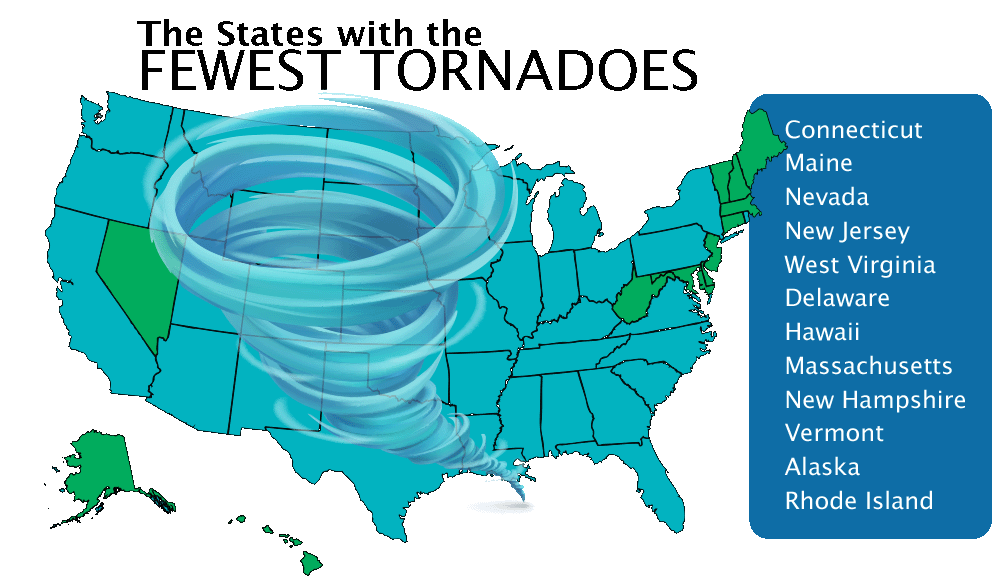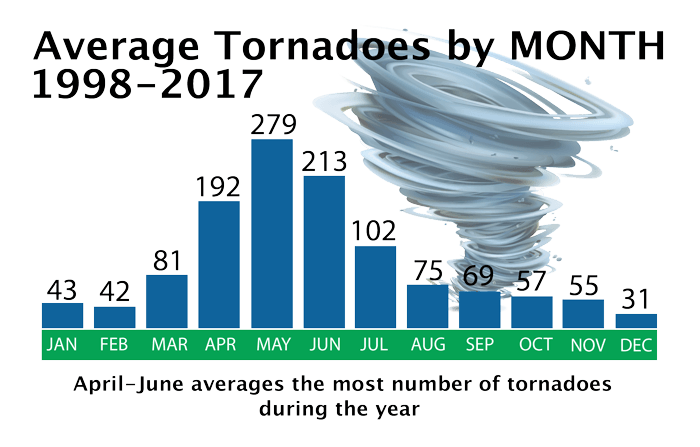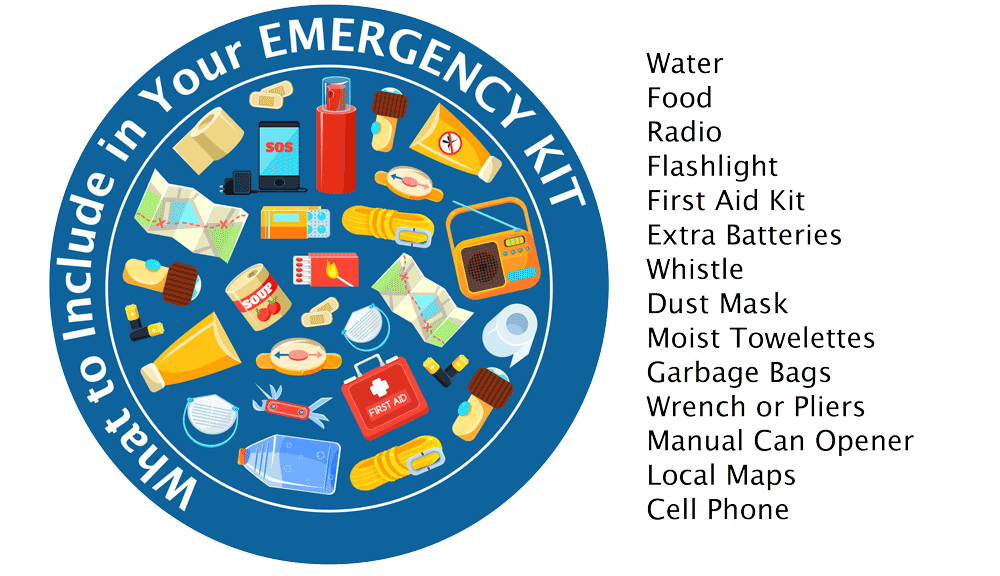How to Prepare for a Tornado: An Expert Guide (2025)
Knowing how to prepare for a tornado in your apartment or home can be the difference between life and death. The three worst states for tornadoes are Texas, Florida, and Alabama. These states combined experience nearly 100 tornadoes each year, which cause billions of dollars in damage. 6 out of the 10 worst states are in the Midwest, known for its shared, terrorizing Tornado Alley. The worst tornado in American history was the Tri-State Tornado in 1925, which killed 695 people.
Read moreFree Home Insurance Comparison
Compare Quotes From Top Companies and Save
Secured with SHA-256 Encryption
Shawn Laib
Insurance and Finance Writer
Since graduating from the University of WA with a B.A. in English Literature, Shawn has been professionally writing in the spheres of entertainment, insurance, business, marketing, and politics. He is passionate about using his writing skills and insurance knowledge to educate the general population on everyday issues surrounding these misunderstood topics. His work has been published on SUPERJ...
UPDATED: Feb 8, 2024
It’s all about you. We want to help you make the right coverage choices.
Advertiser Disclosure: We strive to help you make confident insurance decisions. Comparison shopping should be easy. We are not affiliated with any one insurance provider and cannot guarantee quotes from any single provider.
Our insurance industry partnerships don’t influence our content. Our opinions are our own. To compare quotes from many different insurance companies please enter your ZIP code on this page to use the free quote tool. The more quotes you compare, the more chances to save.
Editorial Guidelines: We are a free online resource for anyone interested in learning more about insurance. Our goal is to be an objective, third-party resource for everything insurance related. We update our site regularly, and all content is reviewed by insurance experts.
UPDATED: Feb 8, 2024
It’s all about you. We want to help you make the right coverage choices.
Advertiser Disclosure: We strive to help you make confident insurance decisions. Comparison shopping should be easy. We are not affiliated with any one insurance provider and cannot guarantee quotes from any single provider.
Our insurance industry partnerships don’t influence our content. Our opinions are our own. To compare quotes from many different insurance companies please enter your ZIP code on this page to use the free quote tool. The more quotes you compare, the more chances to save.
On This Page
- Climate change is leading to more tornadoes and a shift in where they strike
- Rhode Island and Alaska have the fewest tornadoes per year
- Tornadoes are rated on the Enhanced Fujita (EF) scale, EF-0 to EF-5
Whether we’ve experienced them on the news, in movies, or in real life, we all know tornadoes are frightening natural disasters that are largely unpredictable and costly, both of life and of property. Though comprehensive home insurance can protect you from the financial cost of a tornado, these storms can cost us a lot more than just money.
The damage from tornadoes is part of the reason why we’ve created this guide that covers all the guidelines about how to prepare for a tornado before it happens. It is all about how to prepare for a tornado.
This is even more important as tornadoes are on the rise do the effects of climate change.
The National Centers for Environmental Information (NCEI) reports that 2019 was a record year for tornadoes.
In 2019 there were 1,520 tornadoes reported, which was well above the 1991-2010 U.S. average of 1,251 tornadoes per year.
We created this guide to take a closer look at the climate phenomenon of tornadoes, both where they strike and how you can prepare for them. First, we’ll rank the worst overall states for tornadoes.
Then, we’ll break down our research to see what states have the most tornadoes, what states have the fewest, when most tornadoes occur, and how you can prepare for one. We’ll also go through what to do after a tornado, the purpose of a tornado shelter (or another safe place), and sprinkle in interesting tornado facts.
Finally, we’ll cover insurance and how you can be covered when a tornado strikes. If you’re looking for quotes right away, just insert your information into our free online quote comparison tool. It’ll give you the best rates for your area and demographic information.
You can also check out our best insurance companies page, which ranks the best companies for home insurance, auto insurance, pet insurance, and more.
In this article and in the frequently asked questions section, we’ll cover tornado preparedness, creating a tornado preparedness checklist, what to do in a tornado while in a car, and how to prepare for a tornado before it happens.
Tornadoes have the potential to hit the ground and destroy homes in every state of America. So whether you live in the region called Tornado Alley, or in rarely-struck New England, read on to find out more about one of the most dangerous and mysterious weather events our country faces and the state with the most tornadoes.
Table of Contents
Area with the Most Tornadoes in America
As we talked briefly about above, folks tend to think of states in Tornado Alley as the region where tornadoes strike. And that’s not altogether wrong: This region does see a majority of the tornado activity in the United States.
Which states are in Tornado Alley?
Even though the majority of research shows that what we’ve traditionally thought of as Tornado Alley is shifting eastward, the majority of tornadic activity can still be found in a swath of states that divide this country in half, as you can see in the map below.
Texas tops the list of which state has the most tornadoes per year, with an average well over 150, which means you might need to check your Texas homeowners insurance policy to ensure it covers tornado damage.
In the table below, we’ve ranked the 10 states with the most tornadoes according to the NOAA. The average number of tornadoes per year is for the period 1991 – 2010.
10 States with the Most Tornadoes
| STATE | ANNUAL TORNADOES | POPULATION | RANK |
|---|---|---|---|
| Texas | 155 | 28.7 million | 1 |
| Kansas | 96 | 2.912 million | 2 |
| Florida | 66 | 21.3 million | 3 |
| Oklahoma | 62 | 3.943 million | 4 |
| Nebraska | 57 | 1.929 million | 5 |
| Illinois | 54 | 12.74 million | 6 |
| Colorado | 53 | 5.696 million | 7 |
| Iowa | 51 | 3.156 million | 8 |
| Minnesota | 45 | 5.611 million | 9 (tie) |
| Missouri | 45 | 6.126 million | 9 (tie) |
| Alabama | 44 | 4.888 million | 10 |
Even as the number of tornadoes by state increases, the number of tornado-related deaths is, thankfully, on the decline.
In 2018, only 10 people died in tornadoes.
For the most part, we can connect this decline to better early warning systems and other tornado preparedness campaigns.
A state with most tornadoes, Florida is becoming increasingly tornado-prone. Given that tornado damage is usually covered under homeowners policies, if you’re in Florida and call a condo home, you might want to see if condo insurance covers such damage according to your policy.
Manufactured homes are also very likely to be damaged in a tornado and often have special home insurance requirements.
Are you looking for free insurance quotes?
Your one-stop online insurance guide. Get free quotes now!
Secured with SHA-256 Encryption
Deadliest Tornadoes in U.S. History
Severe storms producing a tornado often produce more than one tornado, so typically we refer to the worst tornado events in the United States, as many of these storms move across state lines and include multiple twisters.
What were the deadliest tornadoes in U.S. history? In the list below, we’re providing some key and interesting information on the deadliest U.S. tornadoes of the past. Below are the nine deadliest tornado events in U.S. history.
#1 – Tri-State Tornado: May 18, 1925
- People killed: 695
- People injured: 2,027
- Rating: EF-5
- States affected: Missouri, Illinois, & Indiana
The caption of this photograph taken in the aftermath of the Tri-State Tornado reads:
“Thirteen people perished when the Blue Front Hotel [Murphysboro, Illinois] caught fire in the hours following the tornado.”
Over 650 other people would die in the Tri-State, making it the deadliest tornado in U.S. history.
#2 – Great Natchez Tornado: May 6, 1840
- People killed: 317
- People injured: 109
- States affected: Louisiana & Mississippi
Shortly before 1 p.m. on May 6, 1840, this massive tornado originally formed southwest of the town of Natchez, Mississippi, then moved northeast along the Mississippi River. Stripping the thick forest on both shores of the river, damage to the topography of the riverbank can still be seen in the area today.
#3 – Great St. Louis Tornado: May 27, 1896
- People killed: 255
- People injured: 1,000
- Rating: EF-4
- States affected: Missouri & Illinois
Killing 255 people in St. Louis, Missouri, and East St. Louis, Illinois, the Great St. Louis Tornado of 1896 crossed the Mississippi River to wreak havoc in two states. The print above shows how mythological the storm became in St. Louis area memories.
#4 – Tupelo-Gainesville Tornado Outbreak: April 6, 1936
- People killed: 203
- People injured: 1,600
- Rating: EF-4
- States affected: Georgia
At least 12 tornadoes formed early in the morning of April 6, 1936, in the region of Northern Georgia anchored by the towns of Tupelo and Gainesville. To this day, this 1936 outbreak is the only continuous tornado event to produce more than one tornado with death tolls in the triple digits.
Learn more: Best Home Insurance in Georgia.
#5 – The Woodward Tornado: April 9, 1947
- People killed: 181
- People injured: 970
- Rating: EF-5
- States affected: Texas, Kansas, & Oklahoma
The Woodward Tornado began in the Texas Panhandle on the morning of April 9, 1947, and according to the NOAA, it “produced at least six tornadoes along a 220-mile path that stretched from White Deer, TX (northeast of Amarillo) to St. Leo, KS (west of Wichita).”
#6 – Joplin Tornado: May 22, 2011
- People killed: 158
- People injured: 1,000
- Rating: EF-5
- States affected: Missouri
The 2011 Joplin tornado earned the highest ranking on the Enhanced Fujita scale: EF-5.
The photo above shows just a fraction of the destruction from the 2011 Joplin, Missouri, tornado. One of the biggest tornadoes of the modern era, 158 people died in the May 22 EF-5 twister.
Read about the best home insurance in Missouri and how you can be protected financially after home damage from a tornado.
#7 – Dixie Tornado Outbreak: April 24, 1908
- People killed: 143
- People injured: 770
- Rating: EF-4
- States affected: Mississippi & Louisiana
Producing at least 29 tornadoes in at least 13 states, the Dixie tornado outbreak of April 24, 1908 brought the most destruction to parts of Mississippi and Louisiana.
In the pre-dawn hours of April 24, an especially intense tornado formed southeast of Alexandria, Louisiana, producing a devastating path of damage into Concordia Parish and then onward into Mississippi, ultimately killing 91 people in this single path alone.
#8 – New Richmond Tornado: June 12, 1899
- People killed: 117
- People injured: 200
- Rating: EF-5
- States affected: Wisconsin
It is estimated that this deadly tornado in and around New Richmond, Wisconsin, would today be rated an EF-5, the highest rating a tornado can receive. Though scientists can’t know this with 100 percent certainty, they can make educated claims based on historical climate data, as well as damage photos, such as the one below.
Above is an image of the completely destroyed New Richmond Methodist Church in New Richmond, Wisconsin, after the 1899 tornado. This tornado is the worst tornado on record in Wisconsin history.
#9 – Flint-Beecher Tornado: June 8, 1953
- People killed: 116
- People injured: 844
- Rating: EF-5
- States affected: Michigan
With the highest rating possible (EF-F), the Flint-Beecher tornado is the deadliest tornado in Michigan history. It initially touched down in Genesee County, Michigan, around 8:30 p.m. and continued on a 27-mile path. Along this path, it caused 116 fatalities, 844 injuries, and an estimated $19 million (1953 USD) in damage.
How Tornadoes are Measured
How are tornadoes measured? You may have seen tornadoes rated EF-0 through EF-5, as they are in the list above. This is called the Enhanced Fujita (EF) Scale, and it’s how the NOAA rates tornado severity and strength in the United States. According to NPR:
“Tornado strength is currently measured on what is called the Enhanced Fujita Scale (adapted from the simpler Fujita Scale in 2007), which gives the tornado a rating from 0 to 5 based on estimated wind speeds and the severity of the damage.”
In the table below, we’re providing the NOAA’s characteristics for each point on the EF scale.
The Enhanced Fujita Scale
| RATING | WIND SPEEDS | DAMAGE RATING |
|---|---|---|
| EF-0 | 65-85 mph | Light |
| EF-1 | 86-110 mph | Moderate |
| EF-2 | 111-135 mph | Considerable |
| EF-3 | 136-165 mph | Severe |
| EF-4 | 166-200 mph | Devastating |
| EF-5 | > 200 mph | Incredible |
EF-5 tornadoes are rare, but given the increase of warm, moist air to most parts of the U.S. because of climate change, they are becoming increasingly a part of tornadic activity.
This tornado is considered one of the 10 worst in U.S. atmospheric history. It killed 158 people and injured 1,000 more. Much of this small city in the Southwestern corner of Missouri has had to be rebuilt in the years since the tornado, and you can still see its path through town by the clearly lacking tree line that now splits the city in half.
10 States Most Affected by Tornadoes
A very special holiday for many, Easter, in 2020 was not a day of peace or happy celebrations for thousands of people who live in the American South.
On April 12, 2020 (Easter Sunday) 33 people died as a tornado outbreak ripped across the southern parts of the United States.
The Weather Channel reports:
“There were more than 60 reports of tornadoes as the storms that began on Easter Sunday tore a deadly and destructive path from Texas and Arkansas, across Louisiana, Mississippi, Alabama and Georgia and into the Carolinas and Tennessee.”
When people think of where tornadoes strike, they often think of the loosely defined region known as Tornado Alley. According to LiveScience:
“Generally, a Tornado Alley map starts in central Texas and goes north through Oklahoma, central Kansas and Nebraska and eastern South Dakota, sometimes dog-legging east through Iowa, Missouri, Illinois and Indiana to western Ohio.”
But the traditional Tornado Alley may be changing alongside climate change more broadly. Recent research shows, as we’ll see in the next section, that the concentration of tornadoes is clearly shifting towards the eastern seaboard. That being said, we didn’t want to rank the hardest-hit states for tornadoes based on the number of twisters in a state alone.
To rank the states hit hardest by tornadoes, we found it important to consider not only the average number of tornadoes but also the havoc these storms leave in their wake.
In the table below, we’ve tabulated the hardest-hit overall states for tornadoes based on the average number of tornadoes per year, average tornado fatalities per year, and overall amount of disaster costs since 1980.
10 States Hit Hardest by Tornadoes
| STATE | ANNUAL TORNADOES | ANNUAL DEATHS | WEATHER & CLIMATE DISASTER COST | RANK |
|---|---|---|---|---|
| Texas | 155 | 8 | $200 billion+ | 1 |
| Florida | 66 | 2 | $200 billion+ | 2 |
| Alabama | 44 | 6 | $10-20 billion | 3 |
| Illinois | 54 | 5 | $10-20 billion | 4 |
| Oklahoma | 62 | 3 | $10-20 billion | 5 |
| Kansas | 96 | 2 | $10-20 billion | 6 |
| Nebraska | 57 | 0.7 | $10-20 billion | 7 |
| Minnesota | 45 | 2 | $10-20 billion | 8 |
| Missouri | 45 | 2 | $10-20 billion | 9 |
| Colorado | 53 | 0 | $10-20 billion | 10 |
In the table above, we tabulated our ranking based on information from three sources. The average number of tornadoes per year comes from the National Oceanic and Atmospheric Administration (NOAA) tracking study.
The National Weather Service provided information on average fatalities per year. The cost of disasters — including tornadoes — came from the NOAA’s Climate Initiative.
Tornadoes join with other weather and climate disasters — such as hurricanes, blizzards, and wildfires — to run up not only fatalities, but also strains on local, state, and federal finances. In the map below from NOAA, you can see the cost of weather and climate disasters between 1980 and 2019.
As you can see, Texas and Florida are especially prone to weather and climate disaster-related costs. Texas has seen 111 billion-dollar climate events during this time period, totaling around $250 billion in losses. Florida has seen nearly $225 billion in climate-event related costs as well.
Since 1980, such disasters have had a national impact of nearly $2 trillion, and as climate change continues to make weather patterns more and more unpredictable, this figure is likely only to rise in the coming decades.
States with the Fewest Tornadoes
Tornadoes can occur in every state of the United States, from Alaska to Florida, Maine to Hawaii. In fact, some of the worst tornadoes in U.S. history we discussed above can be found outside the region colloquially known as Tornado Alley.
Which states have the fewest tornadoes? Given the atmospheric conditions of certain regions, some states, particularly those in the map below, are less prone to tornadic activity than others. These states are concentrated in New England, plus Hawaii and Alaska.
In the table below, we’ve ranked the 10 states with the fewest tornadoes according to the NOAA. The table includes the average number of tornadoes per year, the state’s population, and its ranking in this group. The average number of tornadoes per year is for the period 1991 – 2010.
10 States with the Fewest Tornadoes
| STATE | ANNUAL TORNADOES | POPULATION | RANK |
|---|---|---|---|
| Rhode Island | 0 | 1.057 million | 1 (tie) |
| Alaska | 0 | 737,438 | 1 (tie) |
| Massachusetts | 1 | 6.902 million | 3 |
| New Jersey | 2 | 8.909 million | 4 |
| Connecticut | 2 | 3.573 million | 5 |
| Nevada | 2 | 3.034 million | 6 |
| Hawaii | 1 | 1.42 million | 7 |
| New Hampshire | 1 | 1.356 million | 8 |
| Delaware | 1 | 967,171 | 9 |
| West Virginia | 2 | 1.806 million | 10 |
Please note: Two states on this list, Rhode Island and Alaska, have an annual average of zero tornadoes. That doesn’t mean that tornadoes haven’t happened here; they have. That just means that for the years 1991 through 2010, the average number of twisters was none for these two states.
As you can see, New England states fare pretty well when it comes to tornadic activity and dominate this list of the states with the fewest average tornadoes per year. But it’s important to remember: Tornadoes can and have happened in each and every one of the 50 U.S. states, so it’s important to be prepared.
Part of being prepared? Knowing when most tornadoes occur.
Your one-stop online insurance guide. Get free quotes now! Secured with SHA-256 Encryption
Tornado Season: When is it most likely for tornadoes to occur?
“April is the cruelest month,” T.S. Eliot wrote in his epic poem “The Wasteland.” And though he wasn’t right when it comes to the month with the highest number of tornadoes on average, he wasn’t that far off.
May and June have the most tornadoes on average, according to the NOAA, followed by April and July. In the graph below, you can see the number of average tornadoes across the United States for each month between 1998 and 2017, according to the NOAA.
Traditionally, late spring and early summer are the biggest times for tornadic activity. But as climate change continues to cause weather phenomena, much like the lengthen of wildfire season, when tornadoes strike will continue to become more unpredictable in the coming decades, we fear.
Read more: 10 States With the Highest Wildfire Risk
Preparing for a Tornado
How can you prepare for a tornado? Though tornadoes can be hard to predict and often provide little warning time, we can prepare to face them. The Federal Emergency Management Agency (FEMA)’s Ready campaign provides many important tips on making a tornado preparedness checklist or for any other emergency.
Their first tip? Prepare an emergency kit you and your family can grab and carry in the case of an emergency.
Your emergency kit should include the items in the graphic above. More specifically, you should have:
- Water: One gallon of water per person per day for at least three days, for drinking and sanitation
- Food: At least a three-day supply of non-perishable food
- Battery-powered or hand-crank radio and an NOAA Weather Radio with tone alert
- Dust mask to help filter contaminated air and plastic sheeting and duct tape to shelter-in-place
- Cell phone with chargers and a backup battery
We recommend downloading and building your kit with Ready.gov’s helpful resources and emergency supply lists.
Luckily, FEMA offers valuable tips to help you prepare for a tornado beyond building a standard emergency kit every household should have on hand. The federal agency also recommends that if you find yourself under a tornado warning, you should follow these tips:
- If you can safely get to a sturdy building, then do so immediately
- Go to a safe room, basement, or storm cellar
- If you are in a building with no basement, then get to a small interior room on the lowest level
- Stay away from windows, doors, and outside walls
- Do not get under an overpass or bridge. You’re safer in a low, flat location
- Watch out for flying debris that can cause injury or death
- Use your arms to protect your head and neck
The current average lead time for tornado warnings is only 13 minutes. So make sure that you and your family are prepared with an emergency kit, an agreed-upon emergency plan, and the safety measures you can take in place when it comes to facing tornadic activity.
How do tornadoes affect insurance?
In all of this, you might be wondering how to keep your finances safe if a tornado touches down near you and causes damage to your property such as your house, business, or car. In these instances, the damage a tornado causes may be a serious issue, especially if you don’t have insurance like homeowners, commercial, or car.
There are three primary insurances that cover damage sustained during a tornado.
- Homeowners insurance
- Commercial insurance
- Car insurance
Someone who has a homeowners insurance plan is likely covered for the damages sustained in a tornado. This, because there is a clause in a homeowners insurance plan that lists “high winds” as a covered peril under a homeowners insurance plan.
Not only is a homeowner likely covered under their homeowners insurance plan with this peril, but their insurance company might also pay for temporary accommodations if the house has been so damaged that the owner and their family cannot stay there.
A similar clause is found in commercial insurance plans. A business owner who has that clause in their commercial insurance plan or has a more encompassing insurance plan that includes all weather events is covered when a tornado damages their property.
Commercial insurance might also supplement a business owner’s income with business interruption insurance if the weather event causes enough damage that the store has to be shut down while repairs are made.
For someone who owns a car, any damage from a tornado would be covered under comprehensive insurance, which is often called “anything but collision” insurance. Comprehensive insurance covers weather damage to your vehicle, including that of a tornado.
Comprehensive insurance tends to be much cheaper than liability insurance or collision coverage because fewer people file claims related to it. But while comprehensive insurance rates are generally much cheaper than those two other insurances, it does go up considerably in states where weather events are most likely to occur.
For instance, the rates for comprehensive insurance in Kansas, the second-worst state on our list, are much higher than the average for all states in America. This, because it is more likely that vehicles will be damaged in Kansas due to weather events like tornadoes.
Are you looking for free insurance quotes?
Your one-stop online insurance guide. Get free quotes now!
Secured with SHA-256 Encryption
Specialists Weigh In: Tornado Preparedness and Strike Zones
We asked experts from storm shelter builders to finance industry specialists to weigh in with their learned advice on where tornadoes strike and how we can best prepare to face them. Read on to find out what they had to say about how to stay safe during a tornado.
“One important aspect of being prepared with tornadoes is to have a digital home inventory. This inventory is an itemized list of all the personal property in your home such as furniture, electronics, power tools, housewares, decorative items, clothing, etc.
In addition, having a list of appliances, equipment, fixtures and building materials of your home is an important part of the digital home inventory. Once you have an itemized list, it is important to have digital photos, videos, estimated values, and other important documents to finalize your home inventory.
The main reason is if your home is significantly damaged or destroyed as part of a tornado, your insurance company requires a home inventory in order to get reimbursed for your personal property, as well as providing the funds to rebuild your home.
You want to make sure you get properly reimbursed by your insurance company if a tornado hits, and having a detailed home inventory is the key. Proactively doing a home inventory also helps you assess whether you are properly insured by comparing the total value of your home’s personal property against your insurance policy coverage amount.
Most people are underinsured because they own more than what is covered, they did major home remodel projects and did not update their dwelling coverage, and have some collections (art, tools, sports memorabilia, guns, coins, etc.) that are not covered in a standard policy.
Our HomeZada platform provides the home inventory features for free, and the user can use any device (mobile, tablet, desktop) to create and access their home inventory. All the information is securely stored in our cloud platform, so it will survive even if your home doesn’t.”

HomeZada helps homeowners manage, maintain, and protect their financial investments.
Where are the most dangerous areas for tornadoes?
“History says Tornado Alley in the Midwest is the most dangerous location, but the world environment has changed, and tornadoes are forming in areas normally not known for such activity.”
When do most tornadoes strike?
“When two temperature environments clash, circular wind formations form.”
How can people best prepare to protect themselves in the case of tornadoes?
“It takes 15 minutes or less to find a safe room. The best protection is to have a safe room ready for use. Safe domes provide this security.”
What resources are available to people affected by tornadoes? Do you have any personal tornado stories to share?
“If your home is not tornado-proof it is not hurricane-proof.
The Burton family spent seven hours in 130-mph winds in a safe dome while the eye of Hurricane Wilma went down their street. According to Rory Burton, they would not have known there was a hurricane outside if not for the sound of metal flying. There are now five safe domes in his West Palm Beach, Florida, neighborhood.
As a Miami-Dade firefighter during Hurricane Andrew, I saw the need for more safe rooms and stronger home construction.
After seeing the destruction left behind after this hurricane, my company, DRD Enterprises Inc of Davie, began offering the public portable tornado-proof backyard garden sheds. These sheds not only function as a useful storage space, but they can also save your life during a severe storm.
A safe dome measuring 10 feet in diameter and nine feet tall, weighing eight tons is capable of withstanding 200-mph winds or more.
Certified by Miami-Dade County and the Department of Defense, bunkers are used every day for storage, fitness classes, off-grid cabins, extra sleeping space, garage for ATVs, golf cart parking . . . and most importantly, a place to save your life. My company believes the next evolution in storage sheds should be those that can save lives.”

David is a service-disabled veteran and retired firefighter aiming to save lives.
What can we know now about tornado location and preparation?
We all know tornadoes are a frightening thing, and we didn’t need the Wizard of Oz to teach us that. In fact, tornadoes are one of the most dangerous and unpredictable climate anomalies that the United States faces.
In this comprehensive feature, we took a close look at the climate combination that makes up the recipe for disaster that is tornadoes. First, we ranked the worst overall states for tornadoes based on a number of key factors. Then, we broke down our research to see what states have the most tornadoes, what states have the fewest, when most tornadoes occur, and how you can prepare for a tornado.
Though they are rare in some places in the United States, tornadoes can literally strike every one of our 50 states. That means we should all have a working knowledge of where and when they tend to strike, as well as what we should do if we find ourselves facing one.
Methodology: Determining the Worst States for Tornadoes
A state’s worst hit by tornadoes cannot be measured by the number of tornadoes in a state alone. Thus, we ranked the states hit hardest by tornadoes based on the average number of tornadoes per year, average tornado fatalities per year, and overall disaster cost since 1980, not just the number of twisters a state sees.
We tabulated our ranking based on information from three sources. The average number of tornadoes per year comes from the National Oceanic and Atmospheric Administration (NOAA) tracking study. The National Weather Service provided information on average fatalities per year. Finally, the cost of disasters, including tornadoes, came from the NOAA’s Climate Initiative.
The thorough research process for our comprehensive studies, such as this one on tornadic activity in the United States, includes an analysis of over 3,000 data points for all 50 U.S. states and the District of Columbia from a variety of government, nonprofit, academic, and industry sources.
We also covered various information about homeowners, commercial, and auto insurance policies in reference to tornadoes. If you’re ready to compare rights, plug in your information into our free online quote generator to get the best rates based on your specific needs and where you live.
Are you looking for free insurance quotes?
Your one-stop online insurance guide. Get free quotes now!
Secured with SHA-256 Encryption
Case Studies: Insights into Tornado Damage, Preparedness, and Historical Events
Case Study 1: Tornado Damage in Texas
A tornado strikes John and Sarah’s suburban Texas neighborhood, causing extensive damage to their home. Forced to evacuate, they face emotional and financial struggles as they navigate insurance claims and work towards rebuilding their lives.
Case Study 2: Tornado Preparedness in Florida
Mark, a resident of tornado-prone Florida, prioritizes protecting his family and property. Through measures like installing a tornado shelter and fortifying his home, he demonstrates proactive tornado preparedness and educates his neighbors about emergency planning.
Case Study 3: The Tri-State Tornado of 1925
Examining the historical impact of the Tri-State Tornado, the case study follows Sarah, a fictional survivor in a small community. It reveals the challenges faced by survivors and the community’s efforts to recover and rebuild after this devastating event.
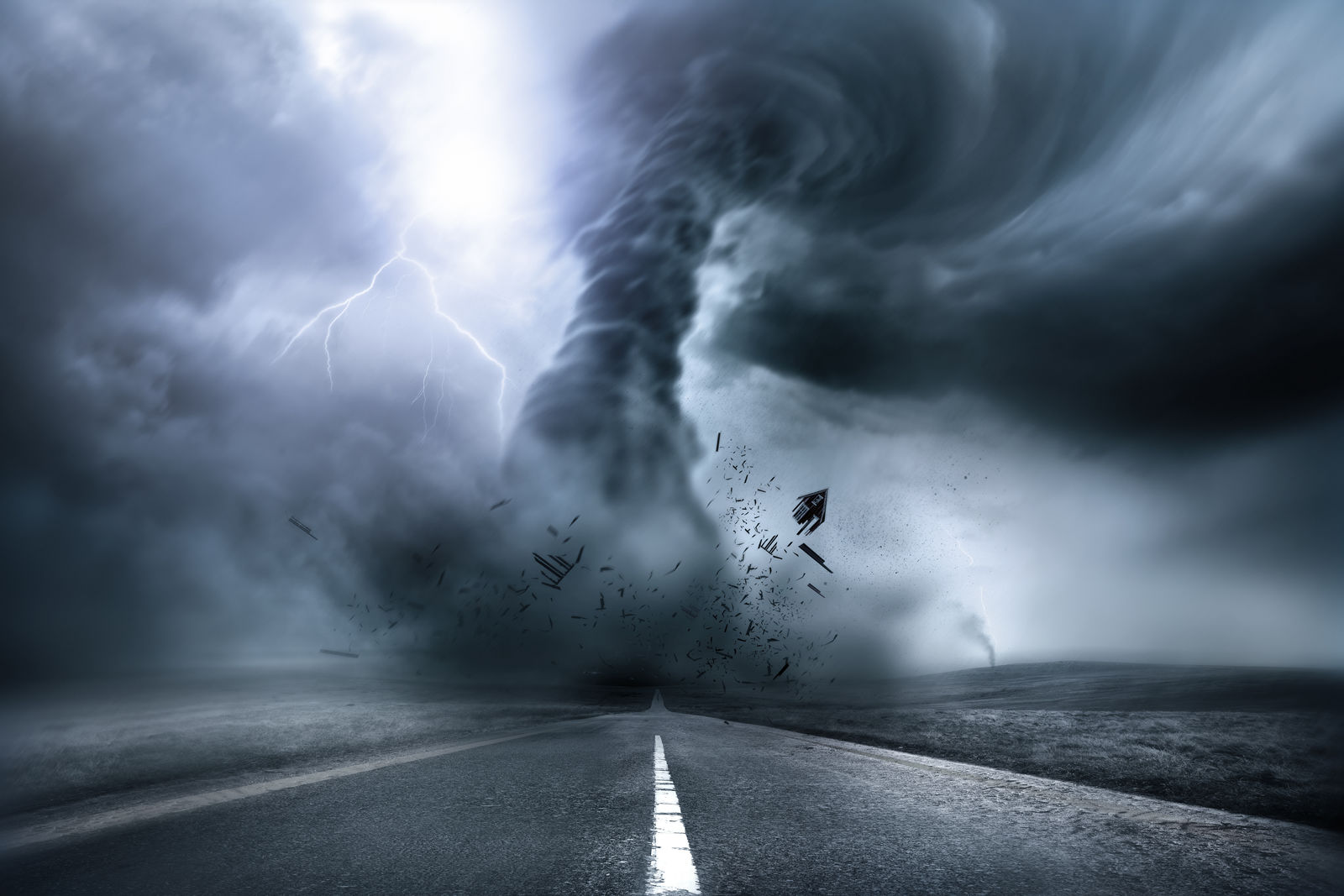
Frequently Asked Questions
What do you need to be prepared for a tornado?
To be prepared for a tornado, you want to bring numerous survival items into your safe or shelter room. Those include a battery-powered radio, a flashlight, backup batteries for any electronic devices, dry or canned food to last at least three days, prescription medications, and a first-aid kit. What should you wear in a tornado to be prepared? Thick, heavy clothing and protective boots is reccommended, as they will offer some protection aginas debris.
What should you not do during a tornado?
The main things to not do during a tornado all increase your likelihood of sustaining a serious injury and/or death. Those include going up to the windows of the house or opening the windows altogether. So what to do during a tornado? If you’re outside, don’t try to outrun the tornado. Instead, find a ditch or other low embankment to lay down. If you’re in a car, don’t try to out drive the tornado. Find a deep spot in the terrain and hunker down.
Should you open your windows during a tornado?
The answer, very clearly, is no. Opening the windows does very little to relieve pressure on the house during a tornado, could result in you being harmed if the windows shatter when you’re trying to open them and do nothing to protect the windows if hit by a tornado.
Is a bathtub safe during a tornado?
Bathtubs can provide a slight amount of security, as it is unlikely that a bathtub will collapse around your if a tornado hits your home. If a bathtub is centrally located in your home, that makes it even a better choice has it can protect you against the collapsing walls of your house.
Can you survive if a tornado picks you up?
Has anyone survived being picked up by a tornado? It is possible to survive if a tornado picks you up. The reason is that most people are killed when a tornado picks them up due to the fall after the tornado passes. If you were to land light and easy, it is possible to survive.
Will my phone alert me of a tornado?
If your phone is set up to receive emergency alerts, then, yes, your phone will alert you of a tornado.
Do tornadoes have a smell?
According to different storm chasers, tornadoes smell a little bit like sulfur or the equivalent of a burning match.
Can you breathe in a tornado?
It is possible to breathe in a tornado, but not as much within the eye. In the center of the tornado, the pressure drops significantly, reducing the amount of oxygen and making it nearly impossible to breathe. Researchers have dubbed this the “death zone” of the tornado.
What state has never had a tornado?
All states have seen a tornado but Rhode Island and Alaska are the two states that have experienced the fewest tornadoes, Rhode Island for the continental US and Alaska for the entire country.
Can dogs sense a tornado?
Dogs can sense drops and rises of the barometric pressure in the air, a drop of barometric pressure indicating a coming storm.
Is it calm inside a tornado?
According to research, yes, tornadoes have an eye the equivalent of tropical storms, which is calm and has incredible low air pressure.
Are you looking for free insurance quotes?
Your one-stop online insurance guide. Get free quotes now!
Secured with SHA-256 Encryption
Shawn Laib
Insurance and Finance Writer
Since graduating from the University of WA with a B.A. in English Literature, Shawn has been professionally writing in the spheres of entertainment, insurance, business, marketing, and politics. He is passionate about using his writing skills and insurance knowledge to educate the general population on everyday issues surrounding these misunderstood topics. His work has been published on SUPERJ...
Editorial Guidelines: We are a free online resource for anyone interested in learning more about insurance. Our goal is to be an objective, third-party resource for everything insurance related. We update our site regularly, and all content is reviewed by insurance experts.



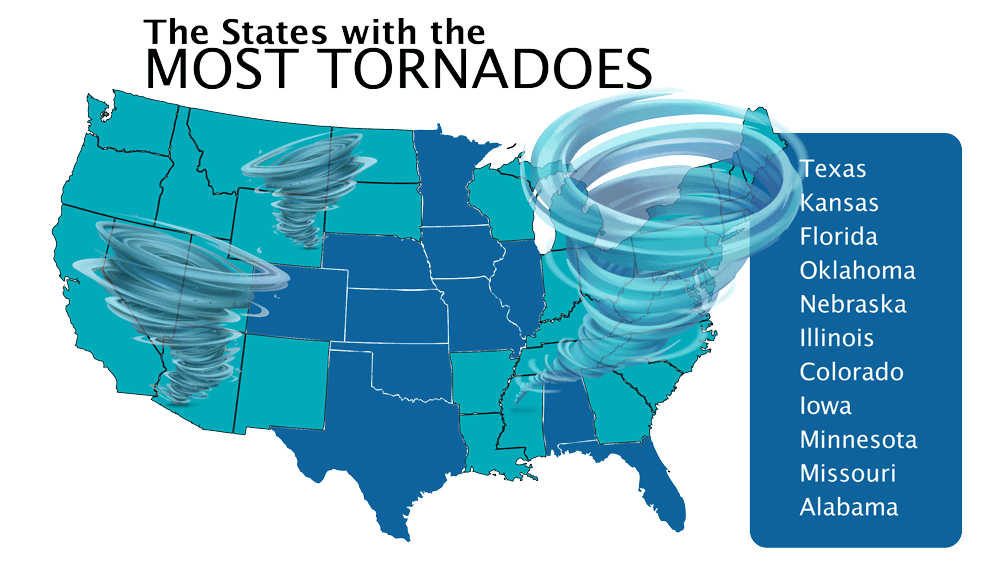
![Thirteen people perished when the Blue Front Hotel [Murphysboro, Illinois] caught fire in the hours following the tornado.](/wp-content/uploads/2020/04/78e83ced-tri-state_tornado_jchs06.jpg)
